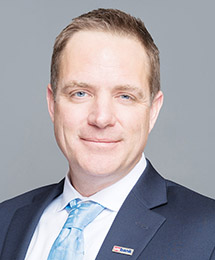(Photo | Pexels)
The banking and credit union industry stands at an interesting juncture as it adjusts to the continual impact of new technology while navigating an ever-increasing regulatory environment.
Financial institutions have seen a growing trend toward online and mobile platforms, which have reduced the need for customers to visit physical locations, while a barrage of new lending guidelines now requires more staff, time and documentation than in previous history.
Interest rates also hang in the balance as trends in one direction or another will be affected by how the national economy performs.
This issue of Cascade Business News delves into the current complexion of the banking and CU environment, canvassing the opinions of several locally-based specialists in the field for their perspective on the industry’s continuing evolution, as well reflecting on upcoming challenges and opportunities.
Coby Horton
Regional President, Central, Eastern and Southern Oregon
U.S. Bank
1025 NW Bond Street, Bend
usbank.com/index
What does the future of walk-in branches look like to you?
It’s no secret that banking customers’ preferences and behaviors are changing. The industry is witnessing is a rapid migration toward digital and mobile banking platforms which our customers’ desire for greater simplicity. Because of that, we’re working hard to stay a step ahead to meet and exceed our customers’ expectations. For instance, U.S. Bank just launched its new and improved mobile banking app which was designed by our customers for our customers. It’s actually really quite remarkable and can really meet most of the needs our customers have from a transaction standpoint including Mobile Check Deposit, peer to peer payments, and the ability to apply for a loan, line of credit, or a credit card. We also have both consumer and business customers applying for loans digitally that are approved in minutes. Because of that, our branches are turning more into customer advisory centers — a place for bankers to meet with customers in an effort to help ensure that they are financially successful, less a place to conduct a routine transaction over a teller line.
What are the major challenges facing your industry today?
Optimizing our physical footprint has been a big challenge for us for sure. In many cases, where our branches are located today are where are customers worked and lived 20-30 years ago. Because customers have moved into new expanding geographical areas and then begin to utilize digital channels, we’re looking at the best places to place our advisory centers. In some cases, we’ll close some but we plan to open others up in high growth areas. The overall challenge facing our industry now I believe though is how financial institutions are investing in infrastructure and digital capabilities to meet their customers changing preferences. Due to the cost and innovation aspect of this issue, I believe we’ll continue to see mergers and acquisitions in the industry going forward.
How do you feel about the current rate environment, and where do you see them going?
The rate environment is certainly tough and even tougher to predict. The upward tick in rate movement paused after a series of moves last year. I think the fed is trying to figure out their next move. It seems market fundamentals and metrics are still strong so we’ll just have to wait and see. I actually really enjoy talking to our business customers to get their perspective. They’re usually the first to know when there’s a change in leading indicators. Rate are still overall low historically and most are now betting that short term rates aren’t moving anytime soon. This certainly helps those who borrower but less so who rely on interest income from savings.
Has the Farm Bill changed your position on lending to the Hemp/Marijuana industry?
While the Farm Bill provided additional guidance around the industrial hemp industry, the rules for implementation have not been finalized. Marijuana is still illegal at the federal level and as a federally regulated organization, we follow federal law.
 Cory J. Allen
Cory J. Allen
Senior Vice President, Commercial Banking Team Leader
Central Oregon Region, Columbia Bank
1133 NW Wall Street, Suite 102, Bend
columbiabank.com
What does the future of walk-in branches look like to you?
It should be no surprise that there has been a major shift in customer habits in terms of using a traditional branch for banking. With the technology that exist today, the need for daily, weekly or even monthly trips to the bank have diminished. There are new platforms and devices that allow customers to do a significant part of their banking without the need to be physically in a branch. This is also true for the bank itself in that the days of keeping paper records of every transaction and massive hard files have been moved to electronic record keeping. Both of these changes have dramatically shifted the way a traditional bank branch will look in the future. The days of large stale bank buildings are no more. New locations will continue to evolve to a “community” or “café” style concept. Banks will want to encourage a welcoming environment where customers feel comfortable and they can conduct other business outside of banking. Columbia Bank has recently implemented this model and I am excited to see how we continue to evolve our offerings to provide our customers with the best experience possible. Here locally we are in the process of designing our new downtown commercial and retail space. I am excited to showcase this new concept right here in Central Oregon.
What are the major challenges facing your industry today?
Regulation, competition, rate environment and aging work force all come to mind. Our industry continues to manage through new regulations and ever evolving new entrants to the market. New entrants include on-line lending platforms or FinTech companies that make centralized score based lending decisions. This has had an impact on consumer and small business lending as they typically offer smaller loan amounts and limited terms.
Internally banks are facing a massive succession plan epidemic as there is a large population of aging bankers who will retire in the next 5-10 years. Banks are looking around asking who is going to replace the aging workforce and how does the industry rush to recruit a new generation of bankers (I know it sounds very exciting so who could imagine it would be difficult to recruit?).
How do you feel about the current rate environment, and where do you see them going?
The last 10 years have been an interesting time in terms of rates. We experienced historical lows and a refinance boom while the Feds kept the Fed Fund Rate at 0.25%, the lowest it can go and effectively zero, from December 2008 until December 2015. The Feds slowly increased this rate by 0.25% with one increase in 2016, three in 2017 and four more increases in 2018 to its current rate of 2.25-2.50%. The result is a current U.S. Prime Rate of 5.5% (Prime Rate is 3% over the Federal Funds Rate). Most all credit cards and short term small business and consumer debt is in relation to a spread over the Prime Rate or a like rate.
Until the last few Federal Open Market Committee (FOMC) meetings, there was a general consensus that they would continue to raise interest rates with three or four more increases in 2019. Fast forward to today and the FOMC has changed their position. At their last meeting in March as widely expected, the Feds kept rates unchanged and the remaining expectation is that there will be no additional rate hikes in 2019 with some experts expecting a potential decrease.
Low GDP growth, moderate inflation and record high employment support a flattening (and even inverted at times) yield curve. Long term rates have been pushed down and the premium between short and long term rates is nominal. This has created greater demand for long term rates while putting pressure on some lending institutions that borrower short term to fund their balance sheet. An inverted yield curve doesn’t necessarily lead to a recession as we have experienced short term inversion in the past, however the yield curve has been inverted before each recession in the past 50 years. Hence the FOMC recent adjustment mentioned above and change to current policy/expectation. The question everyone is asking is how long will this trend continue and what to expect next. If you know the answer to this you could make a lot of money and please give me a call.
Has the Farm Bill changed your position on lending to the Hemp/Marijuana industry?
The short answer is not yet. The Farm Bill has opened the door for traditional banks to begin servicing these industries (only hemp at this time) but there is still work to be done at the State and Federal level before you see this industry become more common practice for all lending institutions. The issue is the bill doesn’t become law until both the States and the USDA finalize rules and regulations for the cultivation of hemp, processing, distributing and sales for all hemp outputs including CBD oils and this is still in process. There are some lending institutions that are pushing this envelope further than others at this time and my recommendation would be to do your research before making any assumptions about your bank / lender. The reality is banks are federally insured and until the State and Federal governments can make a clear defined path, it will remain a gray area. The good news for the industry is that progress is being made and I assume it is only a matter of time before a sustainable long term resolution is reached.
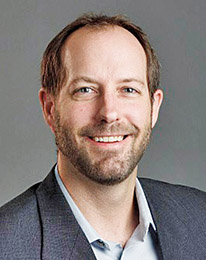 Zak Sundsten
Zak Sundsten
Vice President / Commercial Relationship Manager, Bend Commercial Banking Center
Umpqua Bank
390 SW Century Drive, Suite 100, Bend
umpquabank.com
What does the future of walk-in branches look like to you?
There’s no doubt that the world of banking transactions are increasingly going towards online and mobile platforms. This has caused a reduced need for customers to visit physical bank locations to do their daily transactions. I foresee this trend continuing and will be to the customer’s benefit. I expect to still see bank physical locations, but they will serve those customers looking to do more than just the routine deposit or transfer. The physical locations will serve as account and loan centers, a place for cash, etc.
Businesses conducting their normal deposits will still need to visit physical branches with cash, however we’re already set up and ready for remote check deposit for their desk at their place of business. On top of the already implemented technology, we really haven’t seen the impact of new tech potentially coming in the near future.
What are the major challenges facing your industry today?
The banking regulatory environment is a consistent challenge for all banks. Simply keeping up with the barrage of new and increasing regulations has created a challenging atmosphere for all banks. When I first began in banking, we had one, maybe two full time staff members to help oversee compliance including HMDA and CRA. Now, it’s common to see a department fully staffed to reconcile all of the data necessary to measure and report to agencies, update policies, etc.
Another looming challenge for our industry is growing competition from unconventional ‘banking’ services. There are some talks about non-bank service providers that would like to offer banking products and directly compete with local banks. In the ever-changing technology market place, increased online banking services will be a natural progression however, the local banks will need to keep up with online competitors to stay relevant. One way Umpqua has approached this is our own app called “go-to” which provides a human digital connection, allowing the customer to complete banking activities with simple texts to their dedicated banker.
How do you feel about the current rate environment, and where do you see them going?
It seems like I’ve been saying for years that we expect rates to go up, and over the last couple of years, they have slightly. The increasing rates were mostly seen in the short term durations on loans, and deposits. Long term rates for loans have increased some, however have stayed relatively calm, causing what we see today as a flat yield curve (short term and long term rates are similar). For example as of 4/12/19 according to the US Dept. of the Treasury, a 1 moth Treasury rate is 2.41% compared to a 10 year rate of 2.56%, a fairly small margin. What adds to what could be considered an ‘inverted’ yield curve is how the 5 year rate is 2.38%, which is lower than the 1 month rate.
What happens now is a difficult question that no one knows for sure. If the economy reaches a peak and begins to slow, we could potentially see rates go down, or if we continue with our economic expansion with inflation generating growth and strong employment, the rates could climb. I can see rates going either way. What I’m also considering is if we see a state of economic stagflation; whereas inflation is in a balanced holding pattern or very little growth, with rates holding steady for some time. treasury.gov/resource-center/data-chart-center/interest-rates/Pages/TextView.aspx?data=yield
Has the Farm Bill changed your position on lending to the Hemp/Marijuana industry?
Our banking stance hasn’t changed at this point in time. Umpqua is, and has been on the continuous review of laws affecting the banking of the marijuana related businesses (MRBs). Currently, we’re not able to provide banking services to MRBs due to the disconnect between the legal status federally versus state level. This includes hemp and anything related to the marijuana industry.
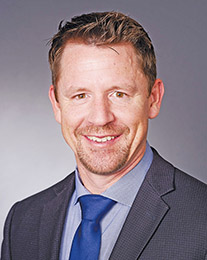 Gary O’Connell
Gary O’Connell
Market President, Central Oregon Region
Summit Bank
560 SW Columbia Street, Bend
sbko.bank
What does the future of walk-in branches look like to you?
The future of walk-in branches includes less brick and mortar. The trend has been steady and should rapidly escalate more in the next few years. There are nearly 90,000 bank branches in the United States, but that figure has been on the decline since the recession when there were about 100,000 branches. Recent announcements indicate that many larger regional and national banks are shrinking their branch networks by closing branches. An old model used in banking was one branch for every 3,500 in population in a community. Most traditional models and assumptions about branches are changing due to the evolution of technology, payment trends from paper to electronic, and the needs and behaviors of consumers and businesses. Summit Bank has always had a “branch light” model, meaning one central branch office in a community. With the recent opening of our Portland office and our intent to have a branch office there in the downtown district, we will soon have a third branch. Whereas most banks the size of Summit Bank would have 7-10 or more branches, our branch light approach since our inception in 2004 has focused on less brick and mortar. Instead, we invest the savings of operating expenses from less brick and mortar elsewhere. We invest to be early adopters of new bank technology and also in savings and rates and fees for clients. This has been a value proposition that has worked very well since our founding and there has been virtually no objection to our business decision to not take a mass market approach by having a branch location every 5 blocks. Banks with a branch heavy approach simply have much higher operating expenses that at some level must be passed on to their client base.
What are the major challenges facing your industry today?
Increasing competition for loans and deposits will likely be a common answer to this question, and Summit Bank would agree with that. Factors contributing to this include efficiencies gained through technology, non-banks providing lending and deposit solutions, and an access to capital environment that is friendly to consumers and businesses right now. While competition is good for clients, we encourage them to long beyond the “deal of the day” offered by some banks and also take a long view and look at the financial performance and safety of their bank, their independence, and give thought to how they think they will be treated by their bank if and when an economic downturn occurs in the future. Fortunately, Summit Bank has maintained a competitive posture for loans and deposits based in part on cost savings realized from our branch light model described above combined with our strategic staffing and infrastructure investments, in particular in the technology space ans treasury management. As result, Summit Bank continues to perform near the top of all community banks nationally, we remain well capitalized. In addition, with a return on equity of 15% in 2018 combined with local ownership and no institutional investments in our bank, we are poised to provide a sustainable competitive offering to our clients for years to come. Just as important, we have very talented colleagues in the right positions to meet the needs of the market. However, we are also rapidly growing — 24% in loans and deposits in 2018 — and maturing as an organization, as many of our clients are, and we must continue to be nimble and make investments along the way. That is how we will continue to evolve. We are a smaller bank than many of our competitors and we continue to see a great opportunity to grow market share through local servicing, local underwriting, responsiveness, and of course a competitive offering.
How do you feel about the current rate environment, and where do you see them going?
You can get lost in thought speculating on the next interest rate change or the next recession or correction. Recently we experienced an inverted yield curve on rates and not many expected that. Instead of making a bet on one scenario, we create contingency plans for up or down scenarios for interest rates as well as movements of the yield curve. We try to incorporate as many market factors as we can such as futures markets, events at the macroeconomic level, and of course regional and local trends. We also share as much as we can with clients as they ponder various capital investments and staffing decisions. While this may not sound like much of an answer, we have an obligation to all of our stakeholders. We must responsibly manage our balance sheet by planning for a multitude of scenarios in order to sustainably manage our business financially.
Has the Farm Bill changed your position on lending to the Hemp/Marijuana industry?
Yes. The conversation has changed in the last five years. We have closely watched the Farm Bill. We also have experienced many inquiries and demand for Hemp and Marijuana banking and lending. This should come as no surprise — we are in Oregon. There are several considerations to make. While we want to continue helping our communities to grow, we must do so diligently and with regulatory compliance. There are different considerations to make when it comes to lending and banking for both Hemp and Marijuana which have become separate, bifurcated products according to our regulatory agencies and according to the Farm Bill — which was an Act of Congress. This is a fluid topic and the dialogue is rapidly changing at the local and national levels. Proposed legislation to allow legal business operators in these industries to enter the banking system would remove much of the ambiguity keeping our industry at bay. We welcome further clarity on the topic through our legislative channels. I think many agree that these industries are not going away and keeping certain businesses out of the banking system creates other unintended consequences that present unnecessary risks to them.
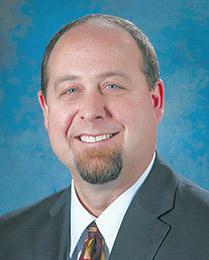 Stephen Wymer
Stephen Wymer
Area Manager, Central Oregon
OnPoint Community Credit Union
950 NW Bond Street, Bend
onpointcu.com
What does the future of walk-in branches look like to you?
We see walk-in branches as a critical part of how we serve our members. Each OnPoint member has different needs and can engage in a way that best fits their lifestyle, whether that’s in person, online or via mobile. We provide our members a full range of options for banking and services, and they can choose what works best for them. In fact, walk-in branches are particularly helpful for discussing each member’s specific situation and needs beyond simply performing a transaction for them. Personal attention and understanding what matters most to our members will always be an integral part of how we build lasting relationships with our members.
What are the major challenges facing your industry today?
Credit unions are uniquely positioned to meet the needs of an evolving industry, but our challenge is to build awareness around our value proposition. The credit union model of being member-owned and returning profits to members, rather than shareholders, is quite different than that of a bank.
We also see the rise of mobile and online financial services as an opportunity to differentiate ourselves. While there are fewer direct interactions with members, we continue to invest in world-class training for our professional staff to ensure we exceed members’ expectations at every point of engagement.
That dovetails our other major challenge: Cybersecurity in the fintech and artificial intelligence era. As our membership continues to grow, we are committed to providing relevant and emerging products and services, while ensuring the safety and security of our members’ assets and information.
How do you feel about the current rate environment, and where do you see them going?
The current interest rate environment has seen a shift in the Fed’s outlook on interest rates. Not more than 12 months ago, the market was anticipating 2-3 Fed interest rate hikes during 2019. Currently, the market is signaling for a potential drop in rates at the end of 2019. OnPoint is well positioned to meet our members’ financial needs regardless of the direction interest rates take.
Has the Farm Bill changed your position on lending to the Hemp/Marijuana industry?
The Farm Bill has not changed our position. We will continue to monitor this industry closely and re-evaluate and modify actions depending on change in Federal Regulations.
What’s next for OnPoint?
We plan to grow the organization both digitally and physically. Through listening to our members and the community, we know they want us to provide access and convenience with more branches and enhanced digital services., as well as a commitment to increase our community involvement with a special focus on financial education. As we diversify our financial education program, we are very excited about our new partnership with the Oregon School Activities Association (OSAA) and the encouraging environment it provides students to grow in community, teamwork and leadership. We believe our 16 founding schoolteachers would be very proud of the work we are doing in education and the real differences we are making in the lives of our members and the greater community.
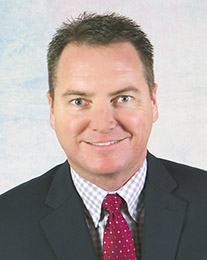 Kevin Cole, CFA
Kevin Cole, CFA
Executive Vice President
Mid Oregon Credit Union
PO Box 6749, Bend
midoregon.com
What does the future of walk-in branches look like to you?
It is a very uncertain time for brick and mortar retail, yet prognosticators have been predicting the end of branch banking since the first ATM was introduced in 1967. At Mid Oregon we are committed to serving members face to face and to having a presence where our members live and work in Central Oregon.
Mid Oregon is not seeing a decline in branch transactions like some of our competitors are experiencing. Also, consumers who need help with a complex issue or want to open a new account still prefer working with a person face to face.
So I think the future of in branch service may look a little different but it will still be a large part of our service mix.
What are the major challenges facing your industry today?
Information security and the fraud related to compromised personal data is a major challenge for us. Because of the many large-scale data compromises the past few years a lot of personal data is no longer private. Though we secure systems from direct attacks very effectively, much of the data we use to serve members is now available to hackers and perpetrators of fraud. We are constantly working to make our identity verification procedures and online banking security more effective. The payment system is also a major security challenge. Some merchants have been very negligent in protecting payment card data. This negligence is not only very costly for the financial institutions who bear the cost of fraud, it is also an inconvenience for the members whose cards are compromised. We are also prohibited from disclosing the source of a card compromise, so our members sometimes believe we are responsible for the breach.
The other major challenge is the regulatory environment. Community based financial institutions have been swept up in many of the regulations that were created in response to the great recession of 2009. These regulations have limited our ability to make loans to members and complicated many of our products and services. The required disclosures are so lengthy and difficult that many consumers cannot understand them or choose not to read them. For a member-owned cooperative like Mid Oregon, the level of regulation is overkill.
How do you feel about the current rate environment, and where do you see them going?
We try to manage our business to the needs of our members. Market rates do place some limits on how well we can achieve that objective. I think the increase in short term rates has been good for savers, who suffered for nearly ten years following the end of the recession. Loan rates remain very attractive by historical norms. I think the rate environment remains conducive to economic growth.
A yield curve as flat as the current one does not typically last for an extended time period. I believe we are more likely to see longer term rates increase to normalize the yield curve. There are also global forces that are more influential on US rates than during previous economic cycles. Supply of and demand for dollars around the globe is a big influence on market rates.
Has the Farm Bill changed your position on lending to the Hemp/Marijuana industry?
Banking cannabis businesses is a risk-reward decision. For now, Mid Oregon has no plans to enter the business. I believe that even if banking is legalized it will still be considered a high-risk business area for financial institutions and there will be limited participation by banks and credit unions. Lending presents a unique type of risk compared to deposit business. While a financial institution can divest of deposit business pretty quickly if there is a change in regulatory rules, divesting of loans involving cannabis businesses is not easy.
It is unfortunate that the disparity between State and Federal laws allows such a public safety issue to continue in our communities. There is not good result from having millions of dollars of cash in a quasi-legal status in our communities.



